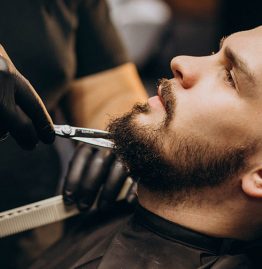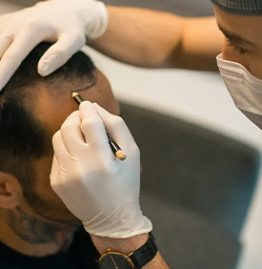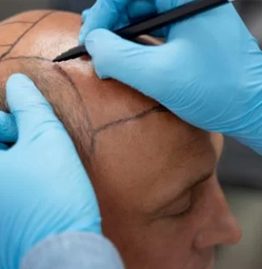Losing one’s hair can be upsetting and harm one’s sense of self-worth and confidence. Hair transplant surgeries have become increasingly common due to their proven success in treating baldness. However, potential patients often wonder if the procedure is uncomfortable. In this post, we’ll go into detail to give you a complete picture of the ease offered by contemporary hair transplant methods.
Is a hair transplant very painful?
Thanks to recent developments in local anaesthesia, the once-dreaded agony associated with hair transplant surgeries is now a thing of the past. Modern medical science has allowed for the refinement of local anaesthetic treatments, significantly reducing patients’ levels of discomfort during surgical procedures.
1:A local anaesthetic is used to numb the area beforehand to ensure the patient is comfortable during the transplant.
2: Hair follicles are removed from healthy body parts and implanted into balding or thinning areas during hair transplant treatments. The pain and suffering of hair restoration procedures, such as Follicular Unit Extraction (FUE) and Follicular Unit Transplantation (FUT), have greatly diminished.
3: Third, people with anxiety or a low pain threshold can choose from various individualized sedative methods. Patients may benefit from these options since it allows them to feel more at ease and comfortable during the process.
4: While the operation is far more tolerable, some patients may still suffer discomfort as they begin to recuperate. This pain can be treated with over-the-counter medications and fades as the scalp recovers
Differences in pain sensitivity:
People experience pain differently. Some people may be more or less sensitive to pain than others. The surgeon and medical team individualised the anaesthetic and pain management strategy for each patient.
1: Anesthesia’s Positive Effects on the Patient Experience
The patient’s comfort is a top priority in today’s hair transplant procedures. The exact administration of local anesthetics guarantees that the patient will feel no discomfort during treatment.
2: Reducing Pain Using State-of-the-Art Extraction Techniques
New techniques for extracting teeth aim to reduce pain. FUE and FUT methods aim to remove follicles with as little harm to the patient as possible.
3: Tailored Relaxation Sedation
Patients with anxiety or heightened sensitivity benefit from the customised sedative choices. These choices improve the patient’s experience and boost the success of the surgery overall.
4: Dealing with Pain After the Procedure
While you may experience some soreness as you recuperate, it shouldn’t be too bad to handle with over-the-counter medications. Surgeons advise patients on pain management strategies.
5: Recognizing Your Pain Tolerance
Everyone has a different ability to tolerate pain. Surgeons and medical staff are sensitive to patients’ concerns about anaesthesia and pain, and they develop treatment plans accordingly.
Wrapping Up
As medical science and practice have progressed, the debate over whether or not hair transplant operations cause discomfort has shifted. Modern hair transplant operations aim to make patients as comfortable as possible with advancements in local anaesthesia, extraction techniques, individualised sedation, and pain management. Patients receive individualised attention and assistance at every stage of the healing process. Even if some discomfort is to be expected, the priority is always the patient’s comfort and well-being. If you’re thinking about getting a hair transplant, know that the standards for reducing patient suffering and improving the quality of care have never been higher.


































































